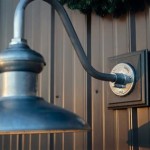Can You Seal Wood For Outdoor Use?
Wood is a natural material that is often used for outdoor projects, such as decks, fences, and furniture. However, wood is susceptible to damage from the elements, such as moisture, sunlight, and insects. Sealing wood can help to protect it from these elements and extend its lifespan.
Understanding the Benefits of Sealing Wood
Sealing wood for outdoor use provides several advantages:
- Protection from Moisture: Moisture can cause wood to rot, warp, and crack. Sealing wood creates a barrier that prevents moisture from penetrating the wood. This is particularly essential in humid climates or areas prone to rain.
- Resistance to UV Rays: Ultraviolet (UV) rays from the sun can cause wood to fade and become brittle. Sealants with UV inhibitors help to protect the wood from this damage, preserving its color and strength.
- Insect and Mildew Protection: Wood is a natural food source for insects and a breeding ground for mildew. Sealants can make the wood less appealing to insects and prevent the growth of mildew.
- Enhanced Aesthetics: Sealants are available in various finishes, such as clear, semi-transparent, and opaque, allowing you to customize the look of the wood to your preference. Some sealants can also enhance the natural beauty of the wood grain.
Types of Wood Sealants
Several types of sealants are available for outdoor use, each suited to specific applications and wood types:
- Oil-Based Sealants: These sealants penetrate the wood, providing excellent protection against moisture and UV rays. They are typically durable and long-lasting, but may require several coats for optimal protection.
- Water-Based Sealants: Water-based sealants are easier to apply and clean up than oil-based sealants. They also offer good protection against moisture and UV rays, but may not be as durable as oil-based sealants.
- Penetrating Sealants: Penetrating sealants are thin and designed to soak into the wood's pores, providing a protective barrier. They are good for enhancing the wood's natural beauty and extending its life but are not as effective as other sealants in preventing moisture ingress.
- Solid-Color Sealants: These sealants create a solid color coating on the wood, often used to change the appearance of the wood or create a specific color scheme.
Choosing the Right Sealant
The best sealant for your application depends on several factors:
- Type of Wood: Different wood species absorb and retain moisture differently. Hardwoods generally require a different type of sealant than softwoods.
- Location: The climate and weather conditions in your area will influence the type of sealant needed. Areas with high humidity or frequent rainfall might need a more water-resistant sealant.
- Application: The intended use of the wood will also affect the sealant choice. For example, decks need greater durability and wear resistance than outdoor furniture.
- Aesthetic Preference: The desired finish, whether clear, semi-transparent, or opaque, will determine the type of sealant you choose.
Always follow the manufacturer's instructions for application, drying time, and maintenance. Properly applied sealants with regular upkeep can significantly increase the lifespan of your outdoor wooden structures and furnishings.

How To Seal Wood For Outdoor Use Diy

How To Waterproof Wood With Oil Sealant Or Stain And Sealer Bob Vila

Best Exterior Sealers For Your Outdoor Spaces The Home Depot

How To Seal Wood For Outdoor Use Extreme

Waterproof Wood With These Simple Methods

How To Seal Furniture So It S 100 Waterproof Durable Wood Sealer Lily Ardor

How To Protect Seal And Waterproof Your Wood For Outdoor Use

How To Waterproof Wood And Masonry The Home Depot

How To Waterproof Wood With Oil Sealant Or Stain And Sealer Bob Vila

Best Exterior Sealers For Your Outdoor Spaces The Home Depot
Related Posts







